- Trending:
- Forgiveness
- |
- Resurrection
- |
- Joy
- |
- Feminism
- |
- Afterlife
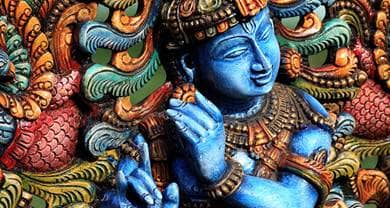
RELIGION LIBRARY
Hinduism
Gender and Sexuality
In Hindu social and ethical texts, women often seem to be hierarchically inferior to men. One of the most widely known of the Dharmashastras, the Manu Smirti, or Laws of Manu, depicts women as being entirely subservient to men: a girl is governed by her father, a married woman by her husband, a widow by her sons. 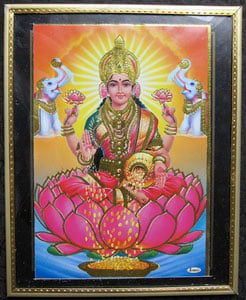 In other texts, women are prohibited from hearing the Vedas, from engaging in certain crucial rituals, from holding positions of religious leadership, and so on. Some texts also hold that even women of the higher castes cannot be considered twice-born (dvijas), and must be reborn as men to make serious religious progress. Women are also depicted in some texts as being impure because they menstruate.
In other texts, women are prohibited from hearing the Vedas, from engaging in certain crucial rituals, from holding positions of religious leadership, and so on. Some texts also hold that even women of the higher castes cannot be considered twice-born (dvijas), and must be reborn as men to make serious religious progress. Women are also depicted in some texts as being impure because they menstruate.
Women in classical Hindu texts are thus often perceived to be inferior beings, sometimes relegated to the level of Shudras, regardless of their actual caste affiliation. This, however, only gives part of the picture. For as much as it is true that women are often denigrated, there are also images of women, in the form of various goddesses, that are decidedly more positive. There is a whole range of mainstream goddesses who are the models of dharmic women.
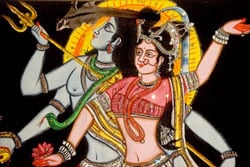 Lakshmi, for instance, the consort of Vishnu, is the embodiment of female virtue; she is the model wife, the bringer of prosperity, the embodiment of compassion. Parvati, the consort of Shiva, is, likewise, the model wife and devotee; she is also often depicted as the model mother.
Lakshmi, for instance, the consort of Vishnu, is the embodiment of female virtue; she is the model wife, the bringer of prosperity, the embodiment of compassion. Parvati, the consort of Shiva, is, likewise, the model wife and devotee; she is also often depicted as the model mother.
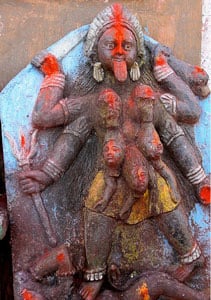 There are also more ambiguous and more powerful images of women in the Hindu tradition. In contrast to the consort goddesses, Durga and Kali are tremendously fierce and cannot be controlled by any male god. Here is an image of women that is in stark contrast to the docile, subservient wife, and even in contrast to the consort goddesses such as Parvati or Lakshmi. Durga is born out of the combined tapas, or ascetic heat, of the three great gods—Brahma, Vishnu, and Shiva—in order to slay the evil buffalo demon Mahishasura. In slaying the demon, she restores order; however, because she is created out of the combined power of the gods, she is also understood to be potentially more powerful than they are.
There are also more ambiguous and more powerful images of women in the Hindu tradition. In contrast to the consort goddesses, Durga and Kali are tremendously fierce and cannot be controlled by any male god. Here is an image of women that is in stark contrast to the docile, subservient wife, and even in contrast to the consort goddesses such as Parvati or Lakshmi. Durga is born out of the combined tapas, or ascetic heat, of the three great gods—Brahma, Vishnu, and Shiva—in order to slay the evil buffalo demon Mahishasura. In slaying the demon, she restores order; however, because she is created out of the combined power of the gods, she is also understood to be potentially more powerful than they are.
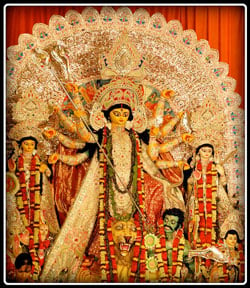 It would be wrong to think that the social realm perfectly mirrors the divine realm. It does not. However, the various personas and characters of the goddesses seem to at least acknowledge the complex roles that women may adopt in the world.
It would be wrong to think that the social realm perfectly mirrors the divine realm. It does not. However, the various personas and characters of the goddesses seem to at least acknowledge the complex roles that women may adopt in the world.
| Four Arthas (purposes) |
| Kama (sexual love) |
| Wealth or power |
| Righteousness |
| Salvation |
Physical love is a necessary part of life; kama, sexual love, is one of the four "purposes" (or arthas)—along with wealth or power, righteousness, and salvation—in Hinduism. However, this physical love must fall within the confines of dharma. Indeed, sexual activity is typically viewed as dharmic only when it falls within the confines of marriage.
| THE FOUR ASHRAMAS | |
| Ashrama (station in life) | Duties |
| Student | Learn duties of his caste |
| Householder | Raise a family |
| Forest dweller | Study sacred texts |
| Renouncer | Meditate |
For instance the first stage in the Ashrama system is the Brahmacarin, the celibate student stage. It is only when one becomes married that one should engage in sexuality. Significantly, when one enters the Sannyasin stage, the renouncer stage, one also renounces sexual activity, because it is sexual desire, among other things, that leads to attachments, and attachments produce karma. There are, however, notable exceptions to this dharmic view of sexuality.
 In the many stories and myths associated with the god Krishna and his human (or semi-divine) lover, Radha, the norms of sexual behavior are abandoned. Krishna sexually cavorts with the married Radha, who is unable to resist Krishna. Here, sexuality is a metaphor for devotion, for bhakti; Radha is so utterly devoted to Krishna (and he to her) that she becomes free of the norms of sexual behavior. Here love of and devotion to Krishna transcend human rules.
In the many stories and myths associated with the god Krishna and his human (or semi-divine) lover, Radha, the norms of sexual behavior are abandoned. Krishna sexually cavorts with the married Radha, who is unable to resist Krishna. Here, sexuality is a metaphor for devotion, for bhakti; Radha is so utterly devoted to Krishna (and he to her) that she becomes free of the norms of sexual behavior. Here love of and devotion to Krishna transcend human rules.
 The god Shiva is the great ascetic of Hinduism, and is often seen as the model for human ascetics. Shiva renounces sexual behavior in this guise. Significantly, it is precisely his control of his sexuality that is the source of his tremendous power and energy. Through the control of his sexual desires, he generates ascetic heat, tapas, which is his purifying—and sometimes destructive—power.
The god Shiva is the great ascetic of Hinduism, and is often seen as the model for human ascetics. Shiva renounces sexual behavior in this guise. Significantly, it is precisely his control of his sexuality that is the source of his tremendous power and energy. Through the control of his sexual desires, he generates ascetic heat, tapas, which is his purifying—and sometimes destructive—power.
A more extreme vision of sexuality is to be found in the Tantric tradition. Tantra pushes the norms of society even further than the bhakti traditions, holding that all rules and laws are human, and not divine, and although such rules may create an orderly society, they also bind us to the human realm. Tantra advocates abandoning all such rules, and often uses sexual images—if not actual sexual activities—as a means of transcending attachments.
Tantra is a highly complex and frequently misunderstood path within Hinduism (and Buddhism), but it essentially holds that we are bound by our lust and desire (not just sexual lust and desire, however).
We attach to the things of this world, objects and rules and social structures, and these things become spiritual impediments. Tantra lays out a more immediate (and more spiritually dangerous) path that conquers these desires by engaging in them. Rather than simply controlling sexual desires—through rules or through ascetic practices—or avoiding sexual desires, followers of the tantric path attempt to defeat them. A well-known aphorism of the Tantric path is: "By the poison of the snake the snakebite is cured." In other words, attachments—sexual and otherwise—are overcome and defeated by engaging in the things that lead to these attachments.
In the end, Hindu views of gender and sexuality are neither simple nor static. Indeed, as in other aspects of Hinduism, tensions and complexity and seeming contradictions are perhaps more the norm than the exception.
Study Questions:
1. What is the role of women within Hinduism?
2. How do goddesses contribute to the roles women adopt within the world?
3. When is celibacy practiced?
4. What can be learned from the Tantric tradition?










